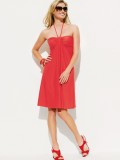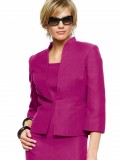Read this ebook for free! No credit card needed, absolutely nothing to pay.
Words: 28539 in 6 pages
This is an ebook sharing website. You can read the uploaded ebooks for free here. No credit cards needed, nothing to pay. If you want to own a digital copy of the ebook, or want to read offline with your favorite ebook-reader, then you can choose to buy and download the ebook.


: Liquid Drops and Globules Their Formation and Movements Three lectures delivered to popular audiences by Darling Charles R Charles Robert - Surface tension; Liquids; Drops
FIG. PAGE 1. Silver sheet floating on water . . . . . 4 2. Column and index of minimum thermometer . . . 6 3. Thread of golden syrup rising and forming a drop . . 8 4. Drops of different sizes resting on flat plate . . 10 5. Formation of a sphere of orthotoluidine . . . 12 6. Detached sphere floating under water . . . . 13 7. The centrifugoscope . . . . . . . 14 8. Aniline drops falling through cold water and ascending through hot water . . . . . . 17 9. Aniline skins enveloping water . . . . . 20 10, 11, 12. The "diving" drop. Three stages . . . . 23 13. Apparatus for forming ascending or descending drops of liquids 27 14-20. Formation of a drop of orthotoluidine, showing the droplet. Seven stages . . . . . 29-31 21, 22. Automatically formed aniline drops, showing the formation of droplets from the neck . . . 34, 35 23-25. Jets of orthotoluidine discharged under water . . 39 26. Water stretched between a tube and a plate . . . 40 27-30. A liquid column stretched upwards by addition of water until broken. Four stages . . . 43 31. A column of aceto-acetic ether in water . . . 44 32. Apparatus for communicating drops . . . . 45 33. Combined vapour and liquid drops . . . . 49 34. Spheroid of water on a hot plate . . . . 58 35. Forces acting on a floating globule . . . . 61 36. Aniline globules on a water surface . . . . 64 37. Orthotoluidine globules on a water surface . . . 66 38. Resolution of a floating skin into globules . . . 68 39. Network formed from a film of tar-oil . . . . 70 40. Quinoline rings and perforated plates . . . . 71 41. The expanding globule . . . . . . 72 42. The "devouring" globule. Five stages . . . 74 43. Photograph of one globule absorbing another . . . 75
PREFACE
The context maintains the form of the lectures delivered on this subject by the author at various places, and the method of presentation is such as may be followed by those who have not received a training in this branch of science. It is hoped, in addition, that the book may prove of some service to teachers of science and others interested in the properties of liquids.
CHAS. R. DARLING.
LIQUID DROPS AND GLOBULES
LECTURE I
Apart from the liquids associated with animal or vegetable life, water and petroleum are the only two which are found in abundance on the earth; and it is highly probable that petroleum has been derived from the remains of vegetable life. Many liquids are fabricated by living organisms, such as turpentine, alcohol, olive oil, castor oil, and all the numerous vegetable oils with which we are all familiar. But in addition to these, there are many liquids produced in the laboratory of the chemist, many of which are of great importance; for example, nitric acid, sulphuric acid, and aniline. The progress of chemical science has greatly enlarged the number of liquids available, and in our experiments we shall frequently utilize these products of the chemist's skill, for they often possess properties not usually associated with the commoner liquids.
There is another feature, however, common to all liquids, which has a most important bearing on our subject. Every liquid is capable of forming a boundary surface of its own; and this surface has the properties of a stretched, elastic membrane. Herein a liquid differs from a gas or vapour, either of which always completely fills the containing vessel. You cannot have a bottle half full of a vapour or gas only; if one-half of that already present be withdrawn, the remaining half immediately expands and distributes itself evenly throughout the bottle, which is thus always filled. But a liquid may be poured to any height in a vessel, because it forms its own boundary at the top. Let us now take a dish containing the commonest of all liquids, and in many ways the most remarkable--water--and examine some of the properties of the upper surface.
We can now understand why a water-beetle is able to run across the surface of a pond, without wetting its legs or running any risk of sinking. Each of its legs produces a dimple in the surface, but the pressure on any one leg is not sufficient to break through the skin. We can imitate this by bringing the point of a lead pencil gently to the surface of water, when a dimple is produced, but the skin is not actually penetrated. On removing the pencil, the dimple immediately disappears, just as the depression caused by pushing the finger into a stretched sheet of indiarubber becomes straight immediately the finger is removed.
Cube . . . . 6 square feet.
Cylinder . . . . 5?86 ,, ,,
And whatever shape we make the vessel, it will always be found that the spherical form possesses the least surface.
Free books android app tbrJar TBR JAR Read Free books online gutenberg
More posts by @FreeBooks

: A Wanderer in Paris by Lucas E V Edward Verrall - Paris (France) Description and travel; Art France Paris Travel








